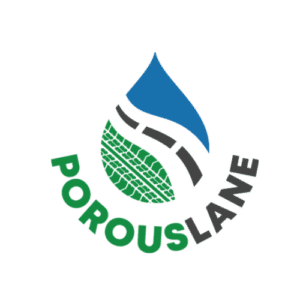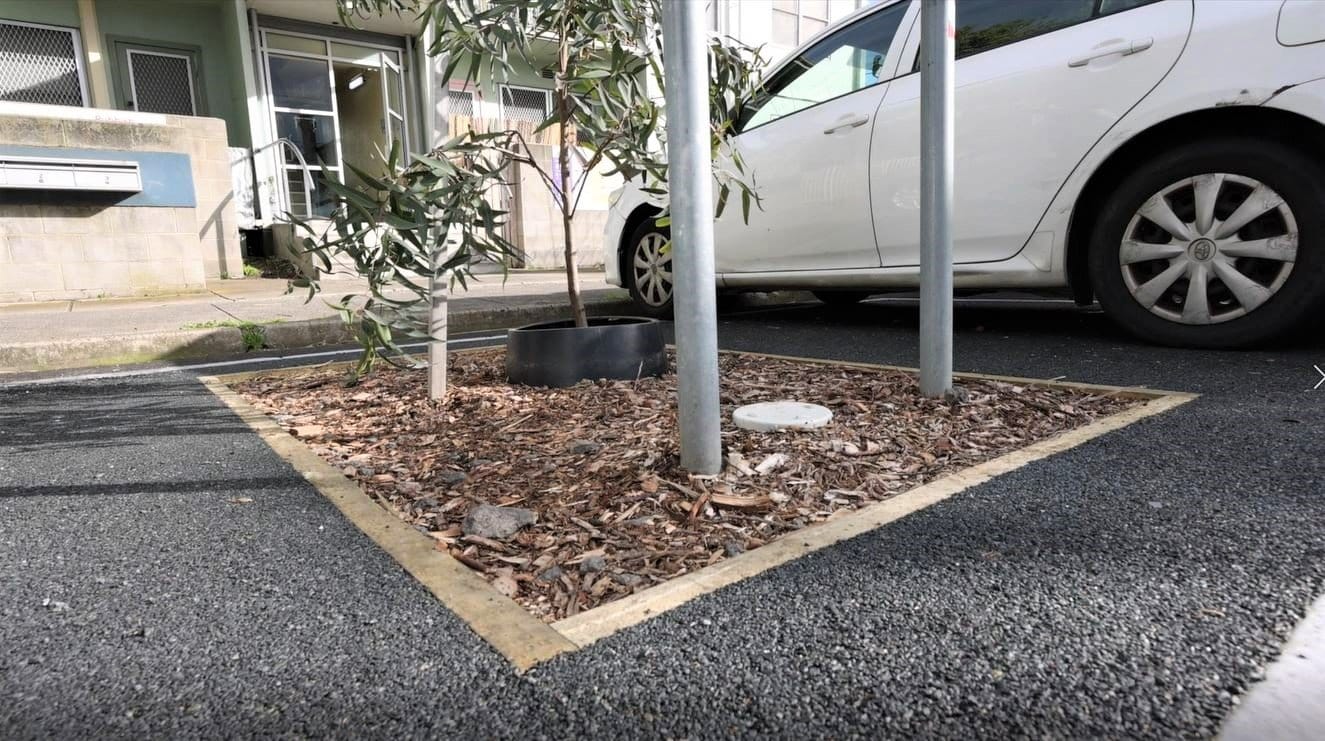

Porous Lane is a high-performance permeable pavement developed at the University of Melbourne made from 30-60% waste tyre aggregate.
Suitable for use in trafficable areas (including carparks) and pedestrian areas (including footpaths, shared paths and tree surrounds), Porous Lane provinces multifaceted benefits to projects including:
– Very high permeability with an infiltration rate 8-10x the ASCE guideline
– Trafficable with a higher compressive strength that asphalt- Can reduce water use including potable water through stormwater harvesting and passive irrigation
– Treats stormwater activating as a filtration medium- Reduces urban heat island effects by being cooler than impermeable materials- Lower carbon footprint than concrete or asphalt
– Can be used for flood mitigation
– Semi-flexible properties make it highly resistant to cracking or forming trip hazards due to tree root movement
